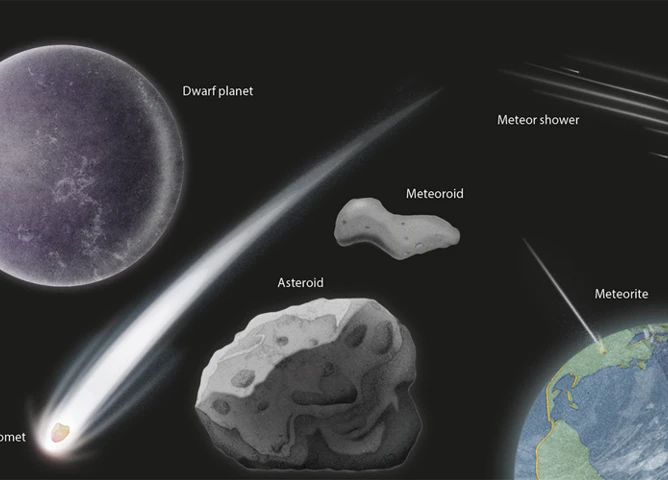Have you ever looked up at the night sky and wondered about the mesmerizing light displays caused by meteor storms and meteor showers? While both events involve the magical spectacle of meteors streaking across the darkness, there are key differences that set them apart. In this article, we will explore the defining characteristics of meteor storms and meteor showers, delving into their frequency, causes, predictability, and more. So, let’s embark on an astronomical journey to unravel the mysteries of these celestial phenomena and understand what makes them so captivating.
Contents
- Meteor Storms
- Meteor Showers
- Key Differences
- Conclusion
-
Frequently Asked Questions
- What is the difference between a meteor storm and a meteor shower?
- How often do meteor storms occur?
- What causes meteor storms?
- Can meteor storms be predicted?
- What is the most famous meteor storm in history?
- How long do meteor storms last?
- Are meteor storms dangerous?
- Can meteor storms be seen from anywhere on Earth?
- Do all meteor showers have the potential to become meteor storms?
- What are some famous constellations associated with meteor showers?
- References
-
Frequently Asked Questions
- What is a meteor storm?
- How often do meteor storms occur?
- What causes meteor storms?
- What is a meteor shower?
- Are meteor showers predictable?
- Where do meteor showers originate from?
- What are the differences in occurrence between meteor storms and meteor showers?
- How long do meteor storms and meteor showers typically last?
- What factors contribute to the duration and intensity of meteor storms and meteor showers?
- Which causal factors differentiate meteor storms from meteor showers?
- References
- Read More
Meteor Storms
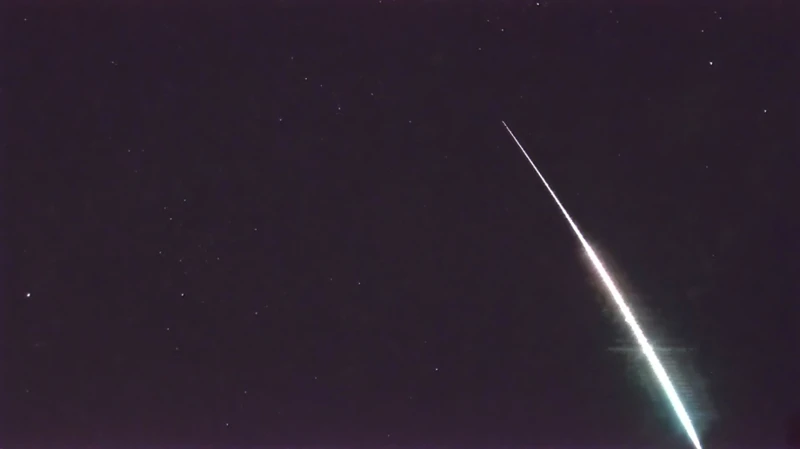
Meteor storms are rare celestial events characterized by a significant increase in meteor activity compared to normal meteor showers. During a meteor storm, a large number of meteors appear in a concentrated period, creating a breathtaking display of shooting stars. These intense outbursts of meteors, also known as meteor outbursts, can last for hours or even days. While meteor showers occur annually during specific times, meteor storms are unexpected and can take astronomers by surprise. The most famous meteor storm in recorded history is the Leonid meteor storm of 1833, where thousands of meteors lit up the night sky like fireworks, leaving spectators in awe. The causes of meteor storms vary, with some attributed to the debris left behind by comets, such as the famous comet Tempel-Tuttle, which is responsible for the annual Leonid meteor shower. The next time you gaze up at the stars, imagine the enchanting spectacle of a meteor storm, an unforgettable cosmic phenomenon capable of painting the night sky in a dazzling burst of light.
Definition
Meteor Storms:
A meteor storm can be defined as a rare celestial event characterized by a significant increase in meteor activity compared to normal meteor showers. During a meteor storm, the number of meteors visible in the night sky dramatically rises, creating a mesmerizing display of shooting stars. These storms stand out from regular meteor showers due to their intensity and higher rate of meteors. While meteor showers are predictable and occur annually during specific times, meteor storms are unexpected and can occur sporadically. They can last for hours or even days, saturating the atmosphere with a shower of meteors. Meteor storms are a thrilling and captivating phenomenon, enticing stargazers and astronomers alike to witness the celestial spectacle unfold. Whether it is the annual Leonid meteor storm or other rare occurrences such as the Perseid meteor storm, these events leave spectators in awe of the wonders present in the night sky. Prepare to be amazed as the heavens come alive with the brilliance of meteor storms.
Frequency and Intensity
Frequency and Intensity: The frequency and intensity of meteor storms differ significantly from meteor showers. Meteor showers occur annually or at regular intervals and are relatively predictable. They occur when the Earth passes through the path of debris left behind by comets or asteroids. During meteor showers, the number of meteors visible per hour, known as the hourly rate, can vary from a few to dozens. These showers are often named after the constellation from which they appear to radiate, such as the Perseids, Geminids, or Orionids. On the other hand, meteor storms are much rarer and far more intense events. They occur when the Earth encounters a particularly dense cloud of meteoroids, resulting in a remarkable surge in the number of meteors visible. The hourly rates during meteor storms can reach hundreds or even thousands of meteors per hour, creating a mesmerizing display of celestial fireworks. The unpredictability of meteor storms adds to their allure, as they catch astronomers and stargazers off guard, often leaving them in awe of nature’s spectacle.
Causes
The causes of meteor storms can be attributed to a variety of factors. Here are some key factors that contribute to the occurrence of meteor storms:
1. Comet Debris: Many meteor storms are caused by the Earth passing through debris trails left behind by comets. Comets are celestial bodies that consist of ice, dust, and rocks. As they orbit the Sun, they leave behind a trail of debris in their path. When the Earth crosses paths with these debris trails, the particles enter the Earth’s atmosphere, causing an increase in meteor activity.
2. Gravitational Interactions: The gravitational interactions between celestial bodies can also play a role in triggering meteor storms. For example, when the Earth passes through the debris trail of a comet, the gravitational pull of the comet can cause the particles to be concentrated in a specific area, leading to a higher density of meteors during a meteor storm.
3. Meteoroid Streams: Some meteor storms are associated with specific meteoroid streams, which are streams of small rocky or metallic particles moving through space. These particles can originate from sources like asteroids or the remnants of disintegrated comets. When the Earth intersects these meteoroid streams, it can result in an intense meteor storm.
4. Dust Trails: Occasionally, meteor storms can be caused by dust trails left behind by asteroids. As asteroids travel through space, they shed dust particles, creating a trail of debris. These dust trails can intersect with the Earth’s orbit, leading to an increase in meteor activity during a meteor storm.
It is important to note that meteor storms are often unpredictable and may not occur regularly. Astronomers rely on historical data and observations to anticipate when a meteor storm might occur. Understanding the causes of these captivating events allows scientists to study and appreciate the wonders of our universe.
Meteor Showers
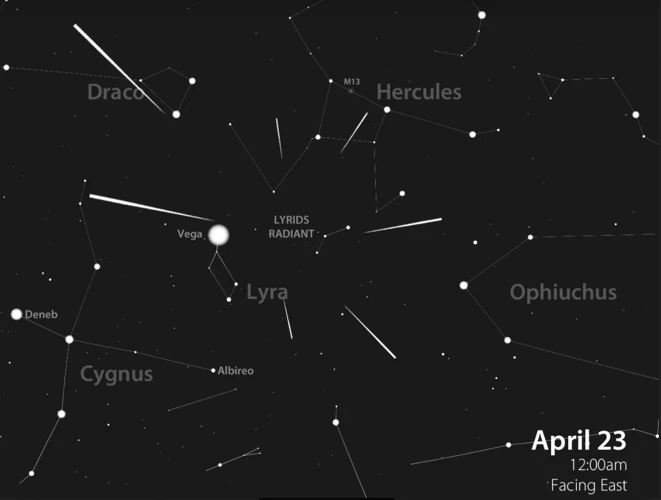
Meteor showers are mesmerizing celestial events that occur when the Earth intersects with the debris left behind by comets or asteroids. These debris, known as meteoroids, enter the Earth’s atmosphere and create a captivating display of shooting stars as they burn up. Unlike meteor storms, meteor showers are more regular and predictable, happening annually or at specific intervals. Some well-known meteor showers include the Perseids, Geminids, and Orionids. The Perseids, for example, are associated with the Swift-Tuttle comet and appear to radiate from the constellation Perseus. Meteor showers are named after the constellation from which they seem to originate, often referred to as the radiant point. So, the next time you witness a shower of shooting stars, remember the celestial dance between Earth and cometary debris, adding a touch of wonder and enchantment to our night sky.
Definition
The definition of a meteor storm relates to a remarkable celestial phenomenon characterized by a sudden increase in the number of meteors observed in the night sky. Unlike regular meteor showers, which typically produce a few meteors per hour, meteor storms bring forth an extraordinary display of shooting stars. During a meteor storm, the number of visible meteors can skyrocket, sometimes reaching hundreds or even thousands per hour. These intense bursts of meteor activity captivate stargazers and astronomers alike, providing a rare opportunity to witness a celestial spectacle that truly mesmerizes. Meteor storms are often associated with the debris left behind by comets as they orbit the Sun. When the Earth passes through these debris trails, an elevated number of meteors enter our atmosphere, creating an awe-inspiring show of cosmic fireworks. The unpredictability of meteor storms adds to their allure, as they can occur unexpectedly and catch astronomers off guard. One prominent example of a meteor storm is the Leonid meteor storm of 1833, which astonished observers with its unprecedented intensity. The definition of a meteor storm encapsulates the extraordinary nature of these events, where the night sky transforms into a celestial theater, enchanting all those lucky enough to witness it firsthand.
Regularity and Predictability
The key difference between meteor storms and meteor showers lies in their regularity and predictability. Meteor showers occur annually or at fixed intervals, making them easier to anticipate and plan for. Astronomers and stargazers can consult calendars or astronomical websites to determine the expected dates and approximate peak times of meteor showers. Some famous meteor showers include the Perseids and Geminids, which occur around the same time each year. On the other hand, meteor storms are highly unpredictable, making them a rare and thrilling event to witness. Unlike meteor showers, which can be forecasted, meteor storms often catch astronomers off guard, surprising them with an unexpected surge in meteor activity. These spontaneous bursts of meteor storms add an element of excitement and uncertainty to the world of astronomy, leaving observers in awe of the wonders the universe has to offer. So, while you can mark your calendars for meteor showers, meteor storms are a delightful surprise that keeps you on your toes in the journey of stargazing and cosmic exploration.
Origins
The origins of meteor showers can be traced back to comet remnants and asteroids. When comets pass through the inner Solar System, they leave behind a trail of debris consisting of rocks, dust, and ice. Over time, Earth’s orbit intersects with these debris trails, resulting in meteor showers. As our planet travels through the trail, the debris enters the atmosphere, heats up due to friction, and burns up, creating the mesmerizing streaks of light we see as meteors. One example of a well-known meteor shower is the Perseids, which occurs every August as Earth crosses the path of debris left by the comet Swift-Tuttle. On the other hand, meteor storms, as mentioned earlier, are often associated with intense outbursts caused by certain comets. These comets, such as Tempel-Tuttle, are known for producing meteor storms during their periodic returns to the inner Solar System. During these events, Earth plows through denser concentrations of debris, resulting in an exceptional display of meteor activity. Understanding the origins of meteor showers and meteor storms enhances our appreciation of these celestial phenomena and allows us to marvel at the wonders of the cosmos.
Key Differences
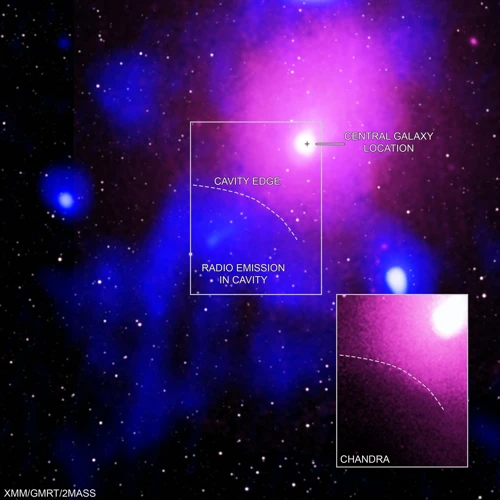
When comparing meteor storms and meteor showers, several key differences emerge. First, in terms of occurrence, meteor showers are more predictable and happen annually, often associated with specific comets or debris streams. Meteor storms, on the other hand, are unexpected and can have long intervals between occurrences. Second, the duration and intensity of these events also vary. Meteor showers tend to span over several days, allowing stargazers ample time to witness the spectacle. In contrast, meteor storms are characterized by a shorter but more intense burst of activity, sometimes lasting only a few hours. Finally, the causal factors behind these phenomena differ. Meteor showers are mainly caused by the Earth passing through the debris left by a comet’s orbit, as seen with the perseid meteor shower associated with the comet Swift-Tuttle. Meteor storms, however, can be triggered by other factors like interactions between multiple comets or unusual gravitational forces. Understanding these key differences allows us to appreciate the beauty and wonder of both meteor storms and meteor showers, these captivating celestial exhibitions that remind us of the vastness of the universe.
Occurrence
Meteor storms and meteor showers differ in terms of their occurrence. Meteor showers are a regular and predictable annual event that sky watchers eagerly anticipate. These showers happen when the Earth passes through the trail of debris left behind by comets or asteroids as they orbit the Sun. As a result, meteor showers occur on specific dates each year, such as the Perseids in August or the Geminids in December. On the other hand, meteor storms are highly unpredictable and infrequent. Unlike meteor showers, which can be observed annually, meteor storms are rare occurrences that can happen unexpectedly. They often catch astronomers by surprise, leading to a sudden and intense burst of meteor activity. An example of a well-known meteor storm is the Leonid meteor storm of 1966, where thousands of meteors rained down from the sky, captivating onlookers with its extraordinary spectacle. The sporadic nature of meteor storms adds an element of excitement to the study and observation of these awe-inspiring celestial events.
Duration and Intensity
Duration and Intensity:
Duration: One of the key differences between meteor storms and meteor showers lies in their duration. Meteor showers typically last for several days, with the peak activity occurring during a specific time window. For example, the Perseid meteor shower, one of the most famous annual meteor showers, is visible from late July to mid-August, with its peak around August 11th and 12th. In contrast, meteor storms are characterized by a much shorter duration. These intense bursts of meteor activity usually last for a few hours or even just a few minutes. The brevity of meteor storms adds to their allure, as they create a sense of urgency and excitement for observers lucky enough to witness them.
Intensity: Another notable difference between meteor storms and meteor showers is the level of intensity. Meteor showers are known for their steady flow of meteors, usually ranging from a few meteors per hour to a few dozen at the peak. While meteor showers can be visually stunning, the meteors tend to be spread out and less concentrated. On the other hand, meteor storms are characterized by an extraordinary surge in meteor activity. During these stormy episodes, the sky is illuminated by a rapid succession of meteors, sometimes numbering in the hundreds or even thousands per hour. The sheer intensity of a meteor storm creates a breathtaking display that leaves onlookers in awe of nature’s grandeur.
So, whether you find yourself marveling at the recurring beauty of a meteor shower or lucky enough to witness the fleeting spectacle of a meteor storm, these celestial events remind us of the vastness and wonder of the universe we inhabit.
Causal Factors
When it comes to the causal factors of meteor storms and meteor showers, there are distinct differences between the two phenomena. Meteor storms are typically caused by the Earth passing through a particularly dense debris trail left behind by a comet or, in some cases, an asteroid. This debris consists of rocks, dust, and other particles that have been shed by the celestial object as it travels through space. When the Earth intersects this debris trail during its orbit around the Sun, the particles enter the Earth’s atmosphere and burn up, creating a spectacular meteor storm.
On the other hand, meteor showers have a different set of causal factors. These events occur when the Earth passes through the debris trail left behind by a comet in its orbit around the Sun. Unlike meteor storms, which involve denser debris trails, meteor showers are the result of smaller particles, such as dust, that have been shed by the comet. The gravitational pull of the Sun and other celestial bodies influences the trajectory of this debris, causing it to intersect with the Earth’s path. As a result, these smaller particles burn up in the atmosphere, creating the phenomenon known as a meteor shower.
In both cases, the gravitational pull of celestial bodies plays a crucial role in determining the path and intensity of the meteor activity. As the Earth moves through space, its gravitational interaction with comets and asteroids can alter their orbits, resulting in a change in the location and density of the debris trails they leave behind. This dynamic interplay between celestial objects and their influence on meteor activity adds to the wonder and unpredictability of these cosmic events. So, the next time you witness a meteor storm or catch a glimpse of a meteor shower, take a moment to appreciate the intricate dance of celestial forces that brings these awe-inspiring displays to life.
Conclusion
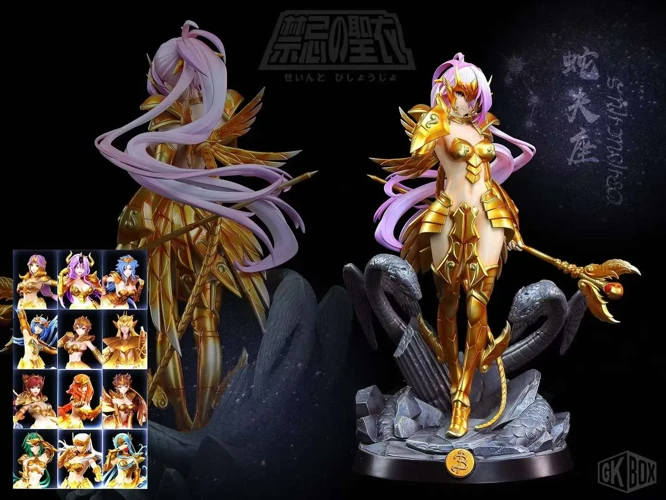
In conclusion, understanding the difference between meteor storms and meteor showers allows us to appreciate the unique and captivating nature of each phenomenon. Meteor storms, although rare and unexpected, bring about intense outbursts of meteors that light up the night sky with an awe-inspiring display of shooting stars. On the other hand, meteor showers occur annually during specific times and provide a more predictable opportunity to witness the beauty of celestial bodies falling through the Earth’s atmosphere. While meteor storms are caused by various factors such as comet debris, meteor showers are often associated with specific comet trails intersecting Earth’s orbit. Both events offer a chance for avid stargazers and astronomy enthusiasts to marvel at the wonders of the universe. So, whether you find yourself eagerly waiting for a scheduled meteor shower or are lucky enough to witness a meteor storm, the sight of these celestial spectacles will undoubtedly leave you in awe of the vastness and splendor of our cosmos.
Frequently Asked Questions

What is the difference between a meteor storm and a meteor shower?
A meteor storm is a rare event characterized by a significant increase in meteor activity compared to a normal meteor shower. Meteor showers, on the other hand, occur annually and have a predictable pattern of occurrence.
How often do meteor storms occur?
Meteor storms are infrequent and unpredictable, with some occurring only once in a lifetime. They are regarded as rare astronomical phenomena.
What causes meteor storms?
Meteor storms are caused by streams of debris left behind by comets or asteroid collisions. When Earth passes through these debris trails, an increased number of meteors enters our atmosphere, resulting in a meteor storm.
Can meteor storms be predicted?
Unlike meteor showers, meteor storms are challenging to predict. Astronomers closely monitor known comets and their debris trails to make educated guesses about possible future storms.
What is the most famous meteor storm in history?
The Leonid meteor storm of 1833 is often cited as the most famous in recorded history. During this event, thousands of meteors per hour illuminated the sky, leaving a lasting impression on those who witnessed it.
How long do meteor storms last?
The duration of a meteor storm can vary. Some may last for several hours, while others can linger for days. The intensity of the storm also fluctuates throughout its duration.
Are meteor storms dangerous?
Meteor storms pose no direct danger to human life. The meteors burn up in the Earth’s atmosphere before reaching the ground, resulting in mesmerizing displays but no significant harm.
Can meteor storms be seen from anywhere on Earth?
In theory, meteor storms can occur anywhere on Earth. However, visibility depends on factors such as the time of year, weather conditions, and light pollution in the viewing area.
Do all meteor showers have the potential to become meteor storms?
No, not all meteor showers have the potential to become meteor storms. Meteor storms are exceptional events and require specific conditions, such as a dense debris field, for a significant increase in meteor activity to occur.
What are some famous constellations associated with meteor showers?
The Perseids meteor shower is often associated with the Perseus constellation. The Orionids meteor shower has affiliations with the Orion constellation, while the Geminids meteor shower is linked to the Gemini constellation.
References
- Difference between shooting stars and meteor showers?
- What is a meteor shower? – The Planetary Society
- How do we differentiate between a meteor shower and …
Frequently Asked Questions

What is a meteor storm?
A meteor storm is a phenomenon where a significantly higher number of meteors are observed compared to a typical meteor shower.
How often do meteor storms occur?
Meteor storms are rare events that occur sporadically throughout the years, sometimes with decades between each occurrence.
What causes meteor storms?
Meteor storms are typically caused by the Earth passing through the debris trail of a comet or asteroid, resulting in a higher concentration of meteors entering our atmosphere.
What is a meteor shower?
A meteor shower is a celestial event where numerous meteors can be seen radiating from a specific point in the sky, called the radiant.
Are meteor showers predictable?
Yes, meteor showers are predictable to a certain extent. Astronomers use historical data and mathematical models to predict the date and time of peak activity for each meteor shower.
Where do meteor showers originate from?
Meteor showers originate from the debris left behind by comets or asteroids as they orbit the Sun. When the Earth passes through these debris trails, we experience a meteor shower.
What are the differences in occurrence between meteor storms and meteor showers?
Meteor storms are rare and sporadic, while meteor showers occur annually or at regular intervals throughout the year.
How long do meteor storms and meteor showers typically last?
Meteor storms are usually short-lived, lasting for a few hours, whereas meteor showers can span several days or weeks.
What factors contribute to the duration and intensity of meteor storms and meteor showers?
The duration and intensity of meteor storms and meteor showers are influenced by several factors, including the density of the debris field, the speed at which the Earth passes through it, and the angle at which the debris intersects our atmosphere.
Which causal factors differentiate meteor storms from meteor showers?
Meteor storms are primarily caused by the Earth passing through a dense debris trail, resulting in a significantly higher number of meteors. On the other hand, meteor showers occur when the Earth passes through a less concentrated debris field.

